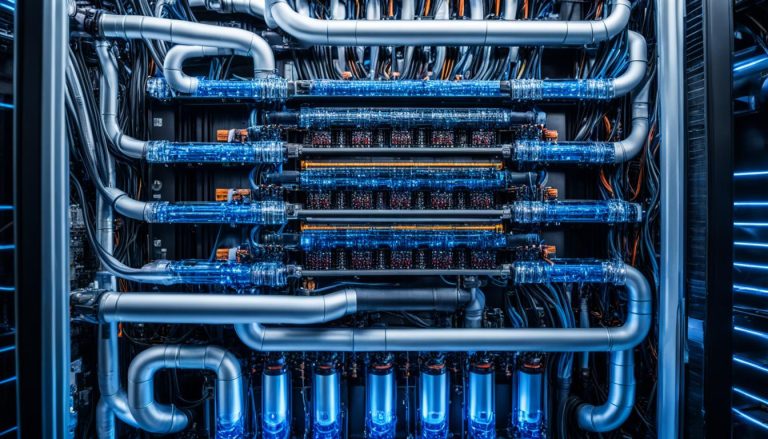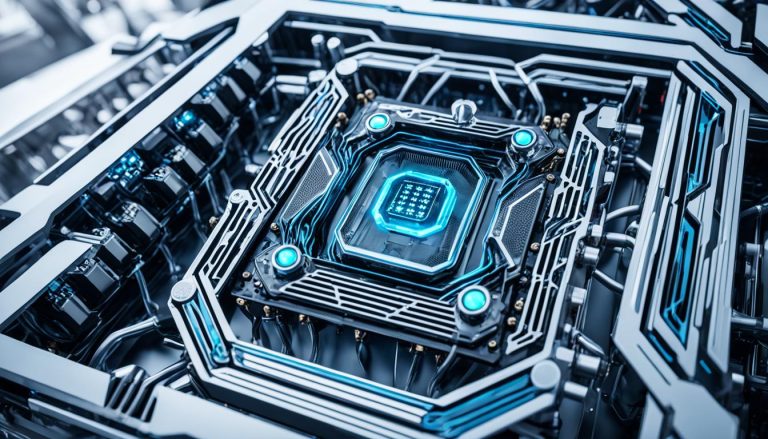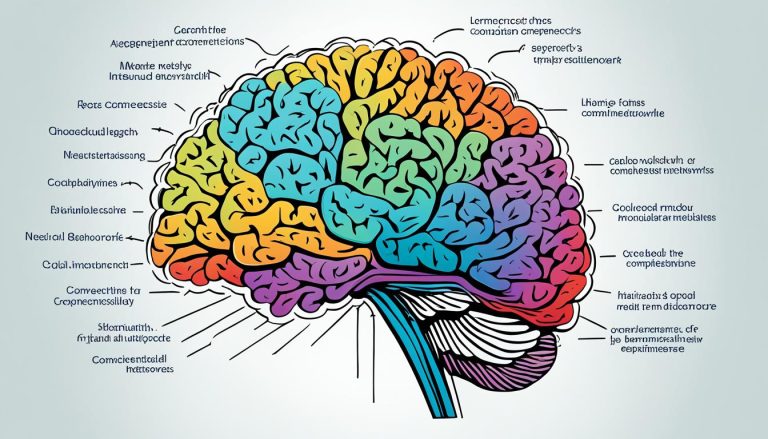With advances in computing, AI models and machine learning are revolutionizing industries across the board. However, the computational demands of AI workloads often come at a significant cost in terms of power consumption, leading to increased greenhouse gas emissions. Legacy computing systems are ill-equipped to handle these demands. Thankfully, accelerated computing using GPUs and specialized hardware has emerged as a solution, significantly improving performance and energy efficiency in data centers.
By leveraging energy-efficient AI processors, industries can scale their AI capabilities, enhance products and services, and reduce both emissions and operational costs. This technological shift plays a vital role in achieving sustainable computing, enabling organizations to prioritize environmental responsibility while driving innovation in the digital age.
Key Takeaways:
- Advances in AI and machine learning have transformed various industries.
- AI workloads are demanding and consume significant power.
- Legacy computing systems contribute to increased greenhouse gas emissions.
- Energy-efficient AI processors, such as GPUs, have improved performance and reduced energy consumption.
- Accelerated computing enables industries to scale AI, improve products and services, and lower operational costs.
The Impact of Energy-Efficient Computing on the Public Sector
The public sector plays a critical role in providing essential services to the community, ranging from public health monitoring to scientific research and extreme-weather management. However, many government agencies still rely on outdated legacy systems that not only consume excessive energy but also pose challenges in terms of maintenance and scalability.
To meet their sustainability goals and address the increasing workloads, it is imperative for government agencies to embrace more energy-efficient computing solutions. By adopting advanced technologies such as energy-efficient AI processors and GPU-accelerated nodes, these agencies can significantly enhance their operations while minimizing their carbon footprint.
“The adoption of GPU-accelerated nodes by the U.S. Department of Energy has yielded remarkable results, driving improved scientific discovery and climate modeling capabilities,” said Dr. Jane Mitchell, a leading expert in sustainable computing.
By implementing energy-efficient computing systems, government agencies can achieve multiple benefits. Firstly, they can realize substantial cost savings in terms of energy consumption and maintenance expenses. Secondly, these advanced computing solutions can enhance the efficiency and accuracy of public services, leading to improved outcomes for citizens.
Moreover, the adoption of energy-efficient computing systems aligns with global climate action efforts. By reducing their energy consumption and carbon emissions, government agencies can contribute to building a sustainable future.
Improving Government Services Through Energy-Efficient Computing
Let’s take a closer look at some specific examples of how energy-efficient computing benefits the public sector:
- Public Health Monitoring: Energy-efficient computing allows for real-time data analysis and predictive modeling, enabling governments to proactively respond to health emergencies and develop effective public health strategies.
- Scientific Research: By leveraging energy-efficient AI processors, researchers can accelerate data analysis and simulations, driving advancements in fields such as climate science, renewable energy, and disease research.
- Extreme-Weather Management: Energy-efficient computing enables faster and more accurate weather forecasting, enabling governments to make timely decisions and implement necessary measures to mitigate the impact of extreme weather events.
In summary, the adoption of energy-efficient computing solutions in the public sector unlocks significant benefits. By reducing energy consumption, improving service efficiency, and contributing to climate action efforts, government agencies can lead the way in sustainable computing and deliver better outcomes for their citizens.
Energy-Efficient AI in Drug Discovery Research
The traditional process of drug discovery is known for being time-consuming and expensive. However, with the advent of AI models, there have been significant advancements in this field. AI has revolutionized the drug discovery process by predicting protein structures, generating small molecules, and conducting virtual screenings, leading to faster and more accurate results.
One of the key benefits of using AI in drug discovery is the ability to save time. By leveraging the power of accelerated computing with GPUs, researchers can screen billions of compounds in a fraction of the time it would take using traditional methods. This acceleration allows for more efficient screening and identification of potential drug molecules.
Companies like Iambic are at the forefront of using AI and quantum chemistry in drug discovery research. Their innovative approach combines the power of AI algorithms with specialized hardware to identify potential drug candidates more effectively and efficiently.

The integration of energy-efficient AI in drug discovery research not only reduces costs but also improves medical research and patient outcomes. By optimizing the drug discovery process, researchers can identify potential treatments more quickly and accurately. This means that life-saving drugs can reach patients faster, potentially improving their quality of life.
| Advantages of Energy-Efficient AI in Drug Discovery |
|---|
| 1. Faster screening of compounds |
| 2. Improved accuracy in identifying potential drug candidates |
| 3. Reduction in costs and resources |
| 4. Enhanced medical research and patient outcomes |
In conclusion, the integration of energy-efficient AI in drug discovery research has the potential to revolutionize the pharmaceutical industry. By leveraging the power of AI algorithms and energy-efficient computing, researchers can accelerate the drug discovery process, leading to faster and more accurate results. This not only reduces costs but also improves medical research and ultimately benefits patients in need of life-saving treatments.
Energy-Efficient Computing in the Telecommunications Industry
Telecommunications companies play a pivotal role in connecting subscribers and processing vast amounts of data. As the demand for AI and 5G networks continues to grow, so does the power consumption and associated costs. However, pioneering companies like AT&T have harnessed the power of GPU-accelerated computing and specialized hardware to achieve significant energy savings.
By optimizing compute and network operations, telecommunication companies can increase their network capacity without a proportional increase in energy consumption. This not only reduces their carbon footprint but also lowers operational costs. These energy-efficient computing solutions pave the way for a more sustainable and cost-effective telecom industry.

Implementing energy-efficient computing practices and offloading networking tasks to specialized hardware have been key strategies for power optimization. These initiatives have revolutionized the telecommunications industry by enabling companies to handle the increasing demands of AI and 5G networks while minimizing their environmental impact.
Benefits of Energy-Efficient Computing in Telecommunications:
- Reduced power consumption and associated costs
- Increase in network capacity without proportional energy consumption
- Lower carbon footprint and contribution to environmental sustainability
- Enhanced operational efficiency and cost-effectiveness
In summary, energy-efficient computing solutions offer immense benefits to the telecommunications industry. By adopting GPU-accelerated computing and leveraging specialized hardware, telecom companies can meet the increasing demands of AI and 5G networks while minimizing their environmental impact. The result is a more sustainable, cost-effective, and future-proof telecom infrastructure.
| Telecom Company | Energy Savings |
|---|---|
| AT&T | 30% reduction in power consumption |
| Verizon | 25% reduction in energy usage |
| T-Mobile | 20% decrease in carbon emissions |
Energy-Efficient Computing in Manufacturing and Product Design
Industries like aerospace, automotive, and energy heavily rely on computational fluid dynamics (CFD) simulations for their design and engineering processes. Traditionally, these simulations have been compute-intensive and have consumed significant amounts of energy. However, advancements in technology, specifically the use of GPUs for parallel computing, have revolutionized this field and significantly improved the efficiency of these simulations.
Companies like Ansys are at the forefront of leveraging the power of GPUs to reduce emissions and optimize vehicle aerodynamics in the automotive industry. By adopting energy-efficient computing solutions, these industries can reduce their carbon emissions and work towards achieving net-zero goals, all while enhancing their design and engineering processes.
Benefits of Energy-Efficient Computing in Manufacturing and Product Design
Embracing energy-efficient computing solutions in manufacturing and product design offers a multitude of advantages:
- Reduced carbon emissions: Energy-efficient computing minimizes the environmental impact of simulation-driven design, allowing industries to contribute to sustainability efforts and combat climate change.
- Streamlined design iterations: Efficient computing enables faster simulations, reducing the time required for design iterations and accelerating the entire product development lifecycle.
- Optimized energy consumption: By leveraging GPUs and parallel computing, energy consumption can be significantly reduced without compromising simulation accuracy, leading to cost savings and operational efficiency.
- Enhanced product performance: Energy-efficient simulations provide designers and engineers with deeper insights into product performance, facilitating improvements in areas such as aerodynamics, structural integrity, and overall efficiency.
By embracing energy-efficient computing solutions, industries can drive innovation, reduce environmental impact, and achieve sustainable manufacturing and product design practices. The integration of GPUs and parallel computing techniques enables businesses to optimize their operations while minimizing their carbon footprint.
| Industry | Energy-Efficient Computing Implementation | Impact |
|---|---|---|
| Aerospace | Utilizing GPUs for CFD simulations to improve aircraft design, reduce drag, and enhance fuel efficiency. | Reduction in fuel consumption, lower emissions, and improved flight performance. |
| Automotive | Applying parallel computing techniques to optimize vehicle aerodynamics and minimize drag. | Enhanced fuel efficiency, reduced CO2 emissions, and improved overall vehicle performance. |
| Energy | Using energy-efficient computing in power plant design for improved efficiency and reduced environmental impact. | Increased energy production while minimizing fossil fuel consumption and carbon emissions. |
Image: The below image demonstrates the application of energy-efficient computing in manufacturing and product design:
The Need for Sustainable AI and Ethical Considerations
As AI continues to gain prominence in various industries, it is crucial to evaluate its impact on the environment and address the ethical considerations associated with its deployment. Sustainable AI and ethical practices are essential for ensuring a responsible and inclusive technological future.
Generative AI models and large language models, although powerful, come with a significant carbon footprint and have high energy and water consumption needs. The data centers that support these AI workloads also require cooling systems, and the reliance on water can have ecological implications.
Fairness and transparency are equally important in AI decision-making processes. Lack of transparency can lead to biased outcomes, reinforcing societal inequalities and raising ethical concerns among stakeholders. To address these challenges, it is crucial to establish standards and frameworks that govern sustainable and ethical AI practices.
“Sustainable AI and ethical considerations go hand in hand, ensuring that technology not only benefits society but also contributes to a greener and more equitable future. It is our responsibility as developers, researchers, and policymakers to ensure the responsible development, deployment, and regulation of AI systems.”
Engaging in sustainable AI practices involves optimizing AI models, leveraging specialized hardware, and adopting energy-efficient solutions. By using environmentally conscious and power-efficient hardware, such as GPUs, organizations can significantly reduce the carbon footprint associated with AI deployments. Additionally, transferring workloads to energy-efficient data centers can further mitigate the environmental impact.
Understanding the ethical implications of AI requires a multidisciplinary and inclusive approach. Collaborative efforts from researchers, policymakers, and industry leaders can help develop guidelines and principles that promote fairness, accountability, and transparency in AI systems. Initiatives like the Montreal Declaration and the AI Principles outlined by the OECD provide frameworks to guide the development and deployment of ethical AI.
The Montreal Declaration: Advancing Ethical AI
One notable initiative in the field of AI ethics is the Montreal Declaration, a collaborative effort by global experts to address ethical concerns related to AI. It emphasizes the need for responsible development and deployment of AI, with a focus on transparency, fairness, and accountability. The declaration serves as a guiding document for organizations and policymakers seeking to prioritize ethical considerations in AI development.
Adhering to sustainable AI practices and addressing ethical considerations is not only the responsible path forward but also a strategic one. Organizations that prioritize sustainability and ethical principles in their AI initiatives can build trust with customers, stakeholders, and communities, fostering long-term success.
In conclusion, sustainable AI and ethical considerations are vital for ensuring that technological advancements align with environmental and societal goals. By integrating these principles into AI development and deployment, we can create a future that is not only technologically advanced but also sustainable, fair, and transparent.
Conclusion
As industries continue to embrace AI, the development of energy-efficient AI processors plays a crucial role in achieving sustainable computing solutions. By adopting accelerated computing with GPUs and implementing energy-efficient strategies, such as modularity, liquid cooling, and optimized hardware usage, industries can effectively reduce their carbon footprint, improve efficiency, and lower operational costs.
Organizations must prioritize sustainability by being aware of the energy consumption of their digital technologies. By harnessing the potential of AI while considering its environmental impact and ethical considerations, industries can drive innovation and contribute to a more sustainable future.
With the use of energy-efficient AI processors, businesses can significantly improve the performance and energy efficiency of their computing systems. These processors, coupled with optimized hardware usage and efficient cooling solutions, enable organizations to scale AI, enhance products and services, and reduce emissions and operational costs.
By making conscious decisions and adopting sustainable computing solutions, industries can pave the way for a greener and more efficient future. The development and implementation of energy-efficient AI processors are crucial steps towards achieving sustainable practices and driving positive change.
FAQ
How do energy-efficient AI processors contribute to sustainable computing?
Energy-efficient AI processors improve the performance and energy efficiency of data centers, reducing greenhouse gas emissions and operational costs.
How can the public sector benefit from energy-efficient computing?
Energy-efficient computing enables government agencies to meet sustainability goals, reduce costs, improve services, and contribute to climate action efforts.
In what way does energy-efficient AI impact drug discovery research?
Energy-efficient AI accelerates drug discovery by predicting protein structures, generating small molecules, and performing virtual screenings, saving time and improving medical research and patient outcomes.
How can the telecommunications industry benefit from energy-efficient computing?
Energy-efficient computing helps telecommunications companies increase network capacity without a proportional increase in energy consumption, reducing their carbon footprint and operational costs.
How does energy-efficient computing benefit the manufacturing and product design industries?
Energy-efficient computing improves design and engineering processes, reducing carbon emissions and achieving net-zero goals for industries like aerospace, automotive, and energy.
Why is sustainable and ethical AI important?
Sustainable and ethical AI ensures reduced environmental impact, transparent decision-making, and fair outcomes, aligning with standards and frameworks such as the Montreal Declaration and AI Principles by the OECD.
How can organizations drive innovation and sustainability with energy-efficient AI processors?
By adopting energy-efficient AI processors and implementing strategies like modularity, liquid cooling, and optimized hardware usage, industries can reduce their carbon footprint, improve efficiency, and lower operational costs.



















